Ways of Seeing: Spring Morning: Haverstock Hill. George Clausen 1881
All images are courtesy of Bury Art Museum
In the dark February days of 2019 I challenged myself to make a regular visit to a single art work out of the thousands at hand from Bury Art Museum and record my thoughts that occurred when I viewed the piece.
It came out of a need to find comfort in the winter months, to charge up the brain cells, challenge myself and widen my perceptions of art and how it impacts me as an individual.
Below are the rough and imperfect notes of my visit, which reveal a deepening relationship with the work of art. I started by trying to work out what I knew about the work of art, but finally realised that my visits were more about finding out about myself.
I challenge you to do the same. It's a remarkable journey over time and into the world, beyond the frame, of a piece of art.
Let this be a testament to the power of art to inspire and instil new ways of thinking. And also let this be testament to our need for our cultural institutions.
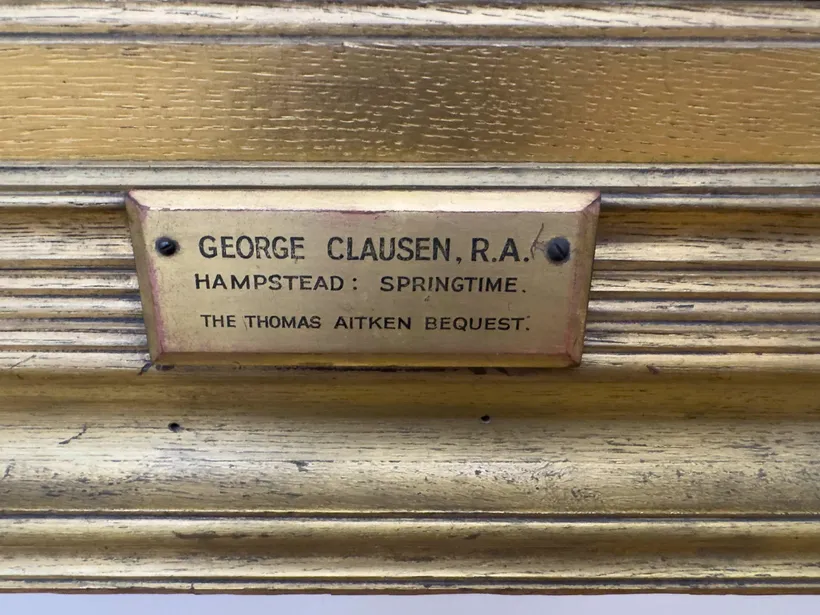
6 Feb 2019
First impressions are of a Pre- Raphaelite feel to the figures. It also has a photographic feel. Perhaps not in terms of it being ‘photo-like’, but in how some of the figures are looking at the artist - as if caught pressing the shutter button. The artist has chosen to capture that kind of reality - why? Gives a feeling of the importance of the event - brings the artist into the painting. Helps keep the ‘nowness’ of the painting. Keeps it fresh and real. The shock of the moment.
There is a duality to the painting - on several levels
- Light and shade split diagonally across the painting
- Tonal duality from greys to the left to reds and blues top right
- Opposition and contrast : in the burst of daffodils in the grey zone and the artisans black hat and jacket in the coloured zone.
- Class. The painting is split between middle class and working class. The flower seller steps uncomfortably into the middle class zone
- Despair and hope. Hope of a spring day. Despair of loss. Bitter/ sweet
- Order and disorder - the rough cobbled road and the regimental paving, bonded by the cluttered workman’s tools spilling into the paving. Is that representative of chaotic feelings in an ordered life?
- Natural forms against structured forms. Trees to left and buildings to right.
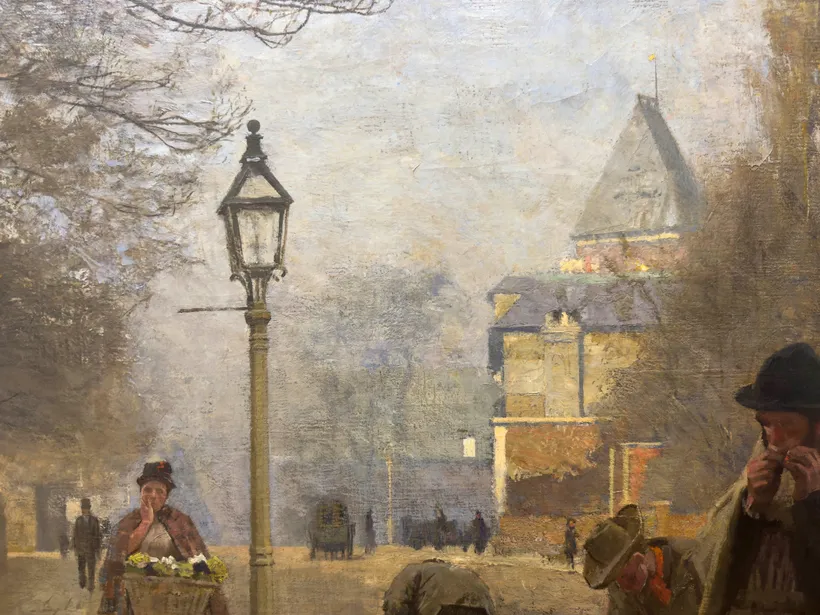
The lampost is integral to this duality - the centre point
The whole painting seems to be a metaphor for the woman’s emotions. Duality reflected everywhere.
I'm told by one of the art gallery staff that the woman has been recently bereaved.
There is a dark figure to the left shoulder of the flower seller. It’s anonymous and haunting. Is this the receding memory of the deceased husband? The child represents the future - the husband the past. What does the sitting woman represent?
Is this painting about coming out of grief and moving on away from the shadows including the bitter sweet emotions mixed up in grief?
Note the geometric and proportional spacing of the main figures. There’s a pattern in there somewhere - must work it out.
Just noticed a proliferation of triangles: the building roof, the lamp top, the space between the bent worker’s legs, the flower seller, the woman’s over-mantle.
There is also a triangular relationship between the people.
Just realised. The woman’s daffodils are from the flower seller. The interaction has been captured in the face handed expression on the flower sellers face. What does it say? Have they just been speaking? Adds a dynamism to the painting.
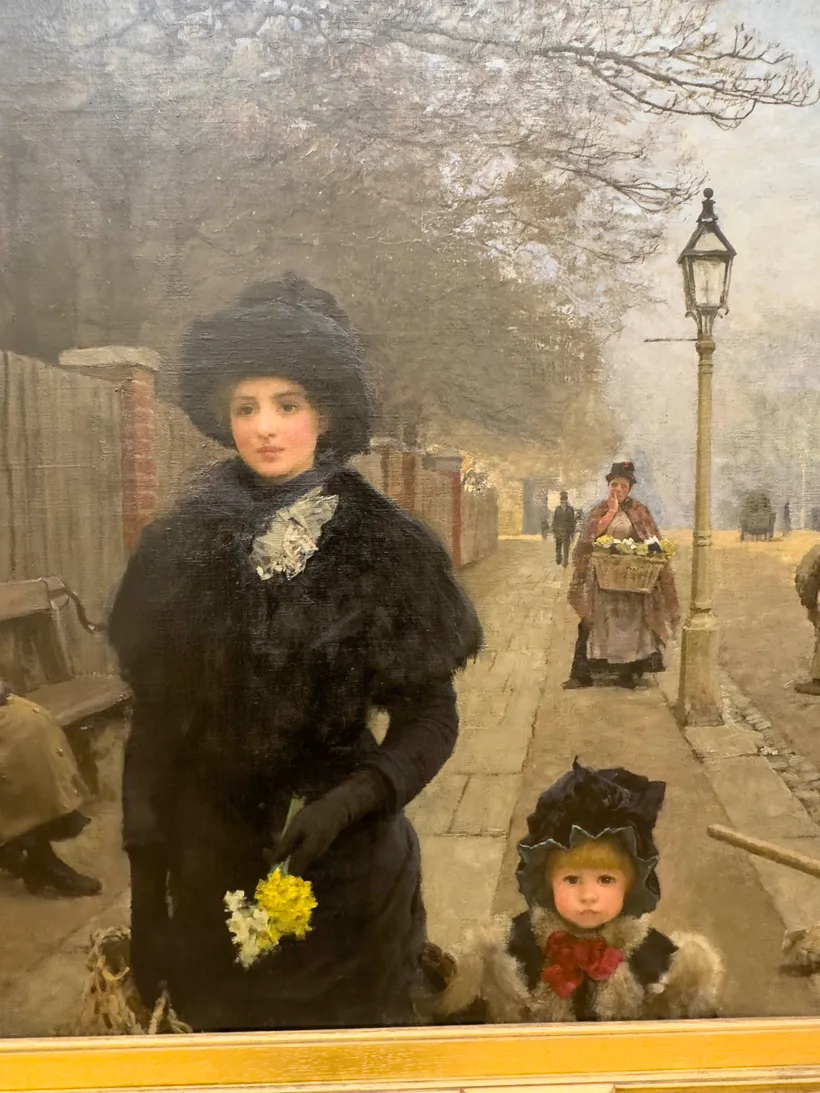
15 Feb 2019
The mother and child. They’re not holding hands. Mum chooses to hold the flowers and not bag them. The child looks as tho she’s holding on to mum’s dress. What is the distance between them? Is it the death or is it deeper?
There is a bit of warmth in the dark corner of winter trees represented by the red bricks of s building in sunlight.
What is the white flurry around mum’s neck?
16 Feb 2019
A commentary on past/future. Perspective = time. Past is lit. Future is in shade. Noticed the buds and blossom on tip of tree reaching into light zone.
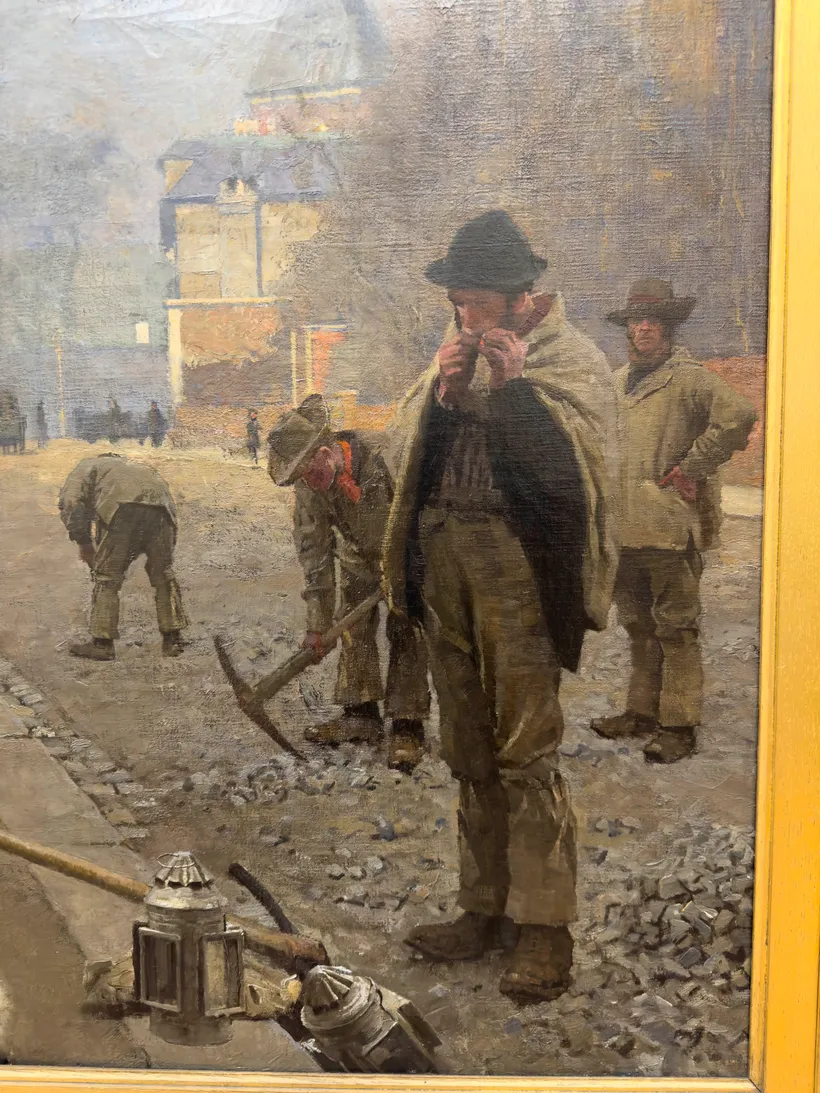
28 Feb 2019
The road repairers are digging up the earth. Reference to burial. Disruption? The road is disrupted.
It is good to also look at what is NOT in the painting: No references to Victorian industry, little transport, no real movement within the painting. No birds. As if frozen.
Frozen is the woman in black.
Linear relationship between the woman, flower seller and the man in black to flower sellers right shoulder. Past, present and future?
What is the principal road worker doing? Lining up a cigar? A feeling of playing a soulful requiem on a harmonica
The workers look more agricultural than industrial. Hardyesque. There is an idyllic, bucolic feel to the workers - as if they are from a different era.
Who is the woman sat on the chair? What is her role? Is she the other woman? She wears a dark dress beneath her coat and a black hat
22 March 2019
Why is she carrying a bag? Tote type bag. Open. Not formal.
Notices the light emanating from the street to the right of her shoulder.
White behind small top hatted figure emphasises him.
Noticed the building to the far right. Church tower? Warmer stone not brick. Is that the entrance lower down to this building? Red brick with white facing stone in front of the little sunlit girl?
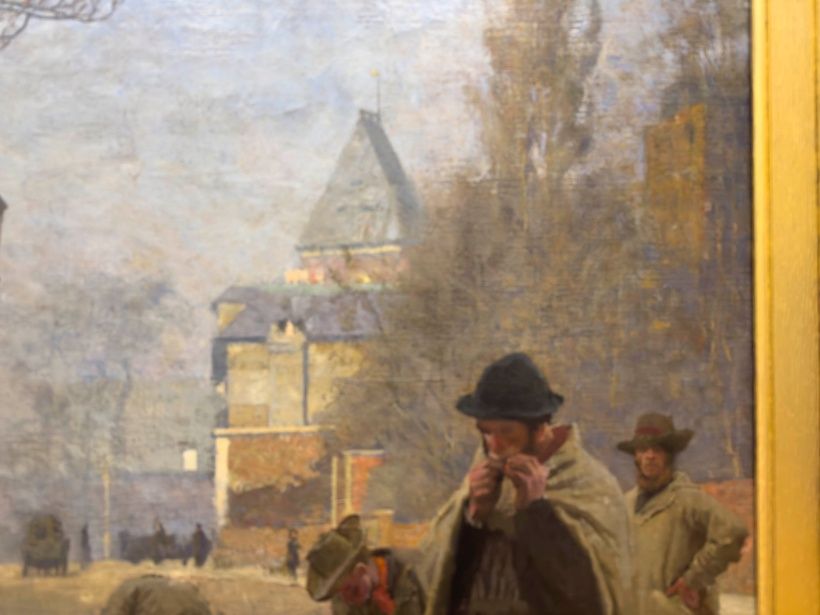
3 May 2019
It’s the delineation of light that appeals to me again, today. The buildings are such a hunched subject. Ugly in their presentation. Simple geometric shapes. Rectangles and squares articulated in pastels. The triangulated hipped roof has decorative ridge tiles - belying a grandeur beyond the plain buildings and oh! What a surprise! A flagpole with a Yellow flag, corresponding to the yellow in the daffodils. A connection between the past, present and future.
There’s another disruption in the painting - an incongruity: the fluted tops of the lanterns. Alien in their appearance - alien silver and metallic. Jarring. They are connected to the woman in a kind of triangulation framed in part by the pick axe.
17 May 2019
It’s the frame that stands out today. Simple, but the lines resonate outwards - like the ripples in a pond. A cubist pond perhaps. Also Clausen’s signature - the 1881 - style of his writing is Art Nouveau. Have seen this style in 1881 date stones. The year is a palindrome. Reads forwards as well as backwards. Much like the painting.
All the principal characters are in the shade. What narrative is light contributing to here? Light in the distance. Raking light from the street at the back. Shadows would suggest midday early afternoon
Lots of people are cloaked.
30 May 2019
Noticed a diagonal line from the sitting woman’s head to the principal woman’s head then across to the lamp and then to the Poplar. Apparently the Poplar represents our uncertainties and fears.
The rude brick pilasters with flat copings are pinning her down above her shoulders.
3 May 2019
It’s the delineation of light that appeals to me again, today. The buildings are such a hunched subject. Ugly in their presentation. Simple geometric shapes. Rectangles and squares articulated in pastels. The triangulated hipped roof has decorative ridge tiles - belying a grandeur beyond the plain buildings and oh! What a surprise! A flagpole with a Yellow flag, corresponding to the yellow in the daffodils. A connection between the past, present and future.
There’s another disruption in the painting - an incongruity: the fluted tops of the lanterns. Alien in their appearance - alien silver and metallic. Jarring. They are connected to the woman in a kind of triangulation framed in part by the pick axe.
17 May 2019
It’s the frame that stands out today. Simple, but the lines resonate outwards - like the ripples in a pond. A cubist pond perhaps. Also Clausen’s signature - the 1881 - style of his writing is Art Nouveau. Have seen this style in 1881 date stones. The year is a palindrome. Reads forwards as well as backwards. Much like the painting.
All the principal characters are in the shade. What narrative is light contributing to here? Light in the distance. Raking light from the street at the back. Shadows would suggest midday early afternoon
Lots of people are cloaked.
30 May 2019
Noticed a diagonal line from the sitting woman’s head to the principal woman’s head then across to the lamp and then to the Poplar. Apparently the Poplar represents our uncertainties and fears.
The rude brick pilasters with flat copings are pinning her down above her shoulders.
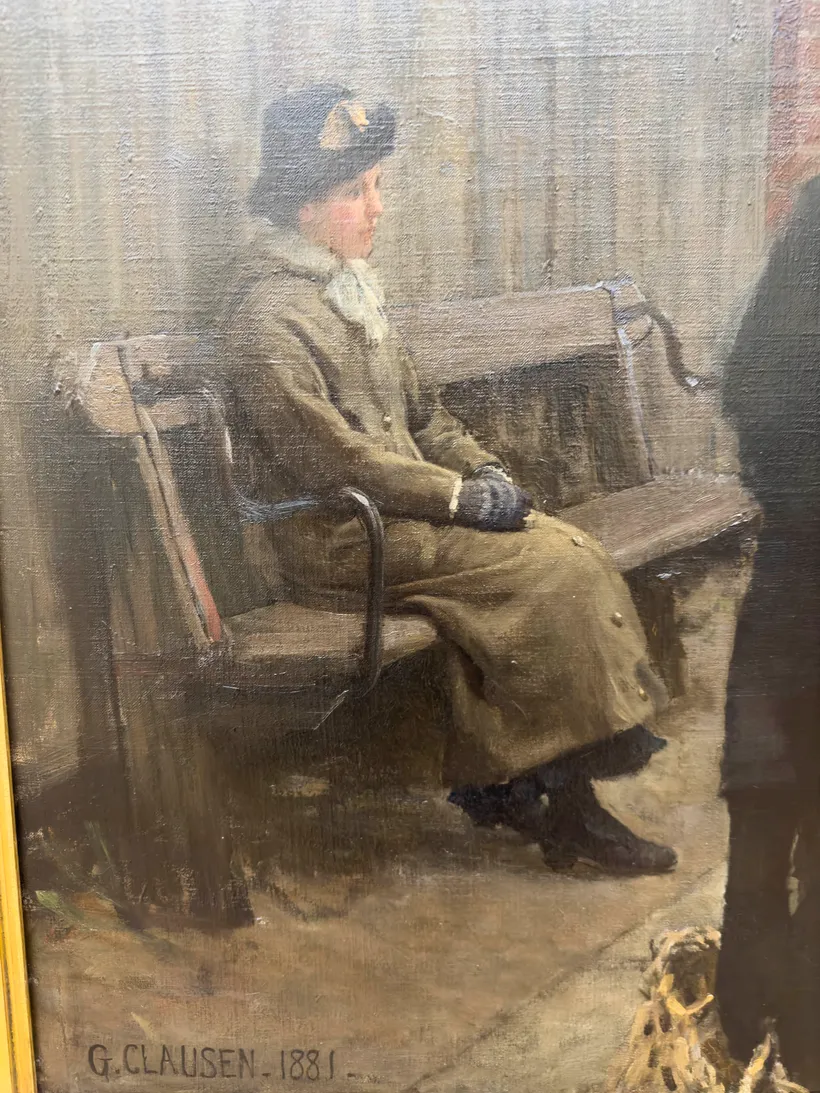
28 Sep 2019
Noticed the daffodils downward angle. As if all hope is gone. They’re depicted as an appendage rather than a symbol. The yellow is perhaps not one of hope, but more jaundiced.
The future and the past are a filigree mix of symbols, tones, colours, perspective and geometry. To me, it all says there is no hope for the future, the past is where the light and warmth was.
Is the bigger picture that they’re mourning something bigger than the individual? Upheaval in society?
“From the 1880s a mounting sense of the limits of the liberal, regulative state became apparent. One reflection of this awareness was the increasing perception of national decline, relative to the increasing strength of other European countries and the United States. This awareness was reinforced by British military failures in the South African War (Boer War) of 1899–1902, a “free enterprise war” in which free enterprise was found wanting.” (Brittanica)
Funny how it seems relevant to my thoughts today in light of political upheaval. A kind of dissonance? Isn’t that what great art does well? Shape shifting. Relevancy in all ages?
19th Oct 2019
Grey, green, black, eggshell blue, red, yellow, ochre. Rock, metal, organic, textile, brick, wood, glass.
There could be a metaphor read into the vignette showing the workers digging up the road. New path? Disturbance? Breaking up of lives? Repair and replenishment?
1 Nov 2019
Male and female. I’ve mentioned before that the gas lamp is a delineator. It also delineates the line between male and female. They are split: 4 females to the left and 4 males to the right.
Class differences
8 Nov 019
Daffodils aren’t just yellow. Also white. What’s going on in the corner left bottom at the end of the bench? Muddied
I see a raven like bird pecking down, mouth open towards the stem of the flowers. Think I’m going bonkers.
5 Nov 2019
Just noticed a kind of transparent lantern like lit up thing at the end of the fencing. People inside. A cab?
All lit up golden light, over her shoulder.
If she is mourning. Why the bag? It adds an element of the domestic.
Have I stated the obvious in an earlier visit. Her face is trance like. It’s cleverly depicted. Holds a lot of signals. Says a lot about her and her situation. If we deleted the rest of the painting and just had her face would we still get the message?
Are the lanterns symbols of hope, light in darkness?
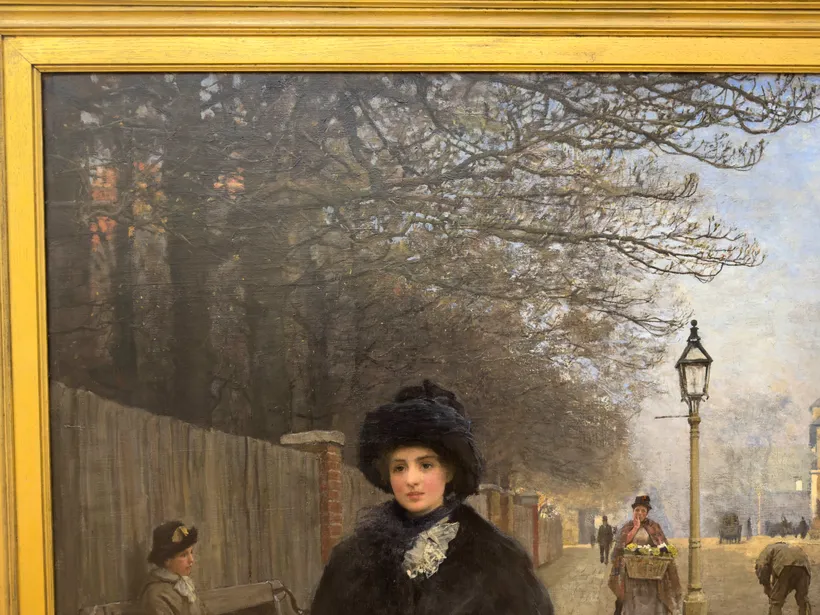
22 Nov 2019
The framing and composition. The principal subjects cut off at the knees and chest, respectively. Why? Brings the reality of the situation into the room with you. Stepping out of the frame. Adds a dynamic dimension.
White rectangular window. Clear bright in an area with little detail.
Just noticed the use of “rule of thirds”. The woman is on the vertical third. Line of other people on the horizontal third.
A link to Haverstock Hill in Hidden London Blog https://hidden-london.com/gazetteer/haverstock-hill/amp/
In the above it states: George Clausen’s Spring Morning, Haverstock Hill(1881) is considered a definitive image of Victorian Britain. The painting, which hangs in Bury art museum, is especially notable for its portrayal of the contrasting economic circumstances of its subjects.
30 Nov 2019
I think it’s more about hope today, rather than anguish - on a paternal level. She’s in anguish, but the artist is using as the aesthetic backdrop elements such as Spring, warmth, light, flowers, colour. The painting is a tender arm around the woman saying: “Everything is going to be alright”.
6 Dec 2019
It’s funny. I’ve realised today that the season impacts upon how I experience the painting. It’s cold and damp outside, and I’m looking at the Spring elements in the pic with a yearning. It has a warmth right now, but in the summer - it feels cooler.
Noticed a touch of red in the blossom. Or leaf.
Funny how the black of her dress absorbs the light. Her face is framed and emphasised by the black.
20 Dec 2019
Golden Section
Has he used the Golden Section to emphasise the main subject?
Rule of thirds
4 Jan 2020
Awkward thing - brick column coming out of her shoulder. She’s pinned down by those receding columns on both shoulders.
I’ve decided, on or around the anniversary of my first visit to the Clausen, I’m going to make it my last (in terms of sitting down and evaluating it). I feel quite sad, sat here, in front of it. It feels like a betrayal - where should I go next? Should I think of such things when I still have a little time to spend with this one? Already, my eyes are peeling off to the left and right - Should I parle with the Poppyseed Gatherers of Northern France? Or run off with the Girl Combing Her Hair? Now that would be rude.
11 Jan
Usually, when I come to see the painting I sit in front of it a few metres from it. Today, I’m prowling around it like a caged lion. It’s good to see it in context as a material object on the wall. A man walks up to it. Does he see what I see? He spends 30 seconds looking at it. “How could he!” I think.
—-
31 Jan 2019
I have to say goodbye to the Clausen. It might be some time before I see it again.
It’s been a wonderfully enriching journey. A journey without distance, without miles - a journey that explored the depths that a piece of art has to offer.
I started visiting the Clausen because I wanted to learn about the world of art, and ended up learning far more about myself. I’ve discovered that I have the capacity to see behind the layers of paint, to engage with the artists intent but perhaps most of all I’ve discovered that I’ve fallen in love with the woman in the painting. It’s grown from vague interest to empathy, from detached observation to consumed adoration. How can I fall in love with differing textures, tones and colours of pigment?
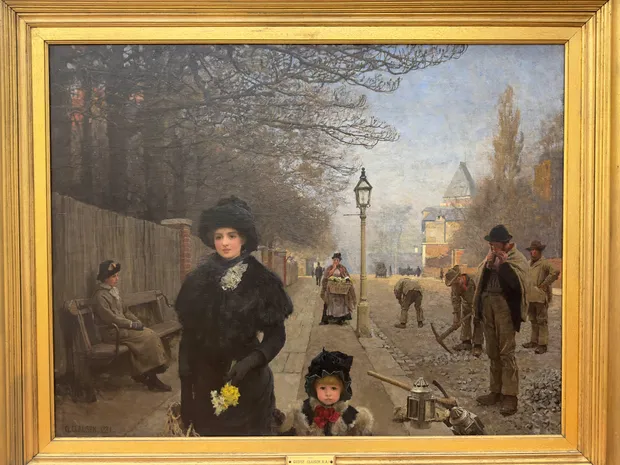

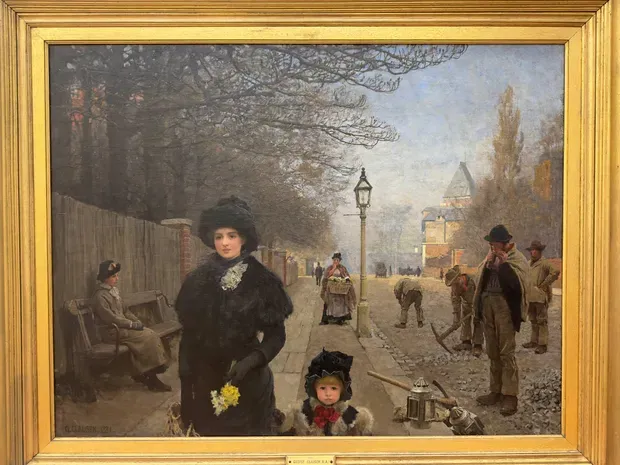
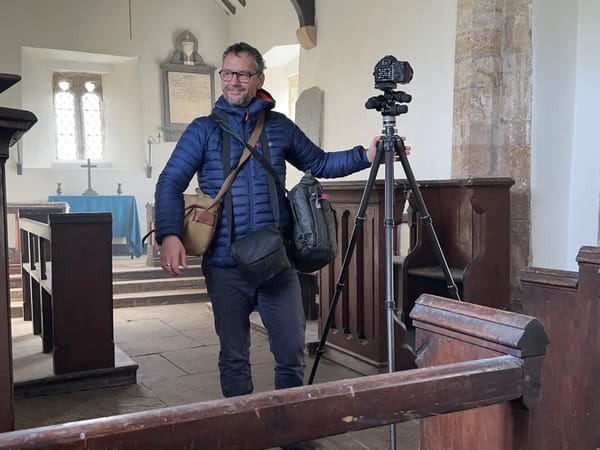
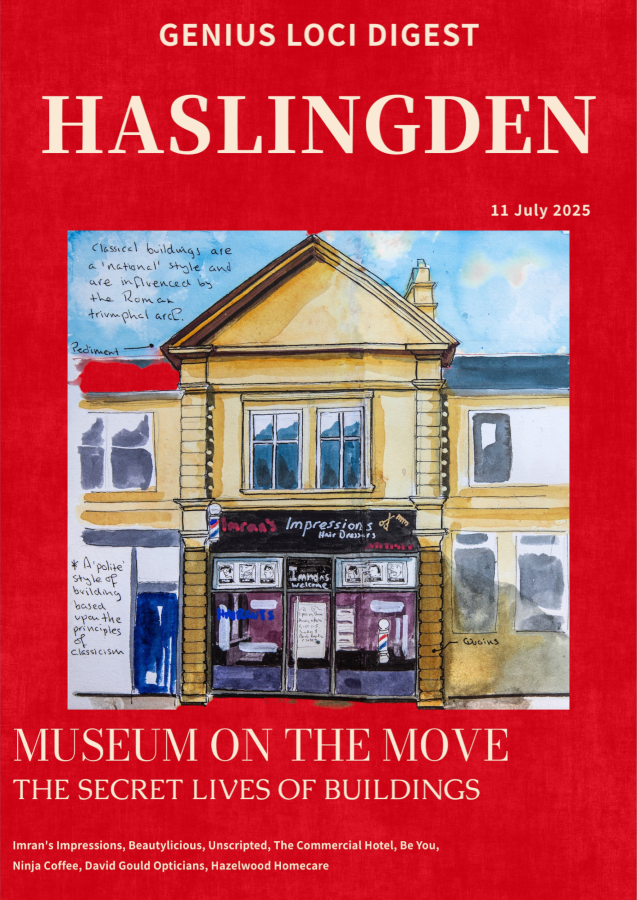
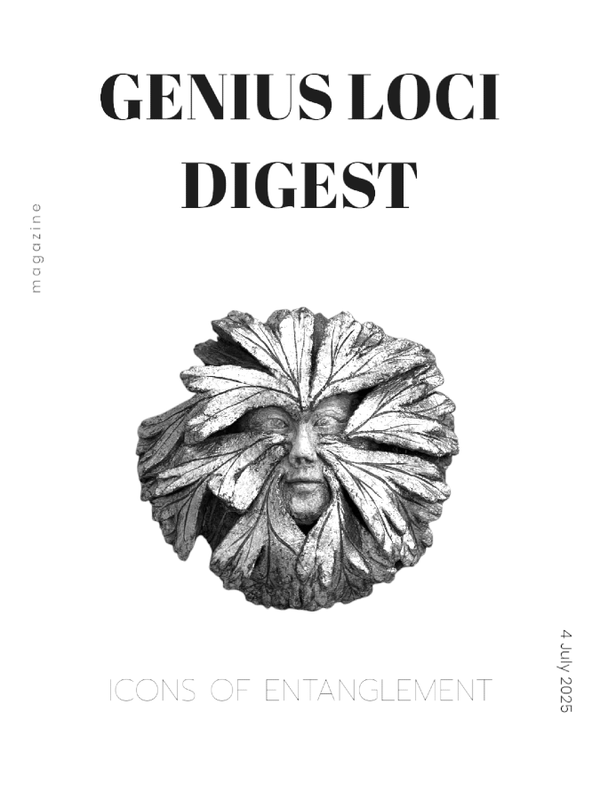


Member discussion